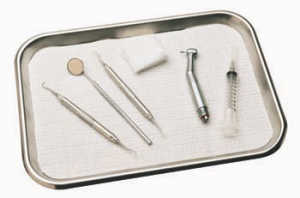Some of you have probably read about the thousands of patients of the Tulsa, Oklahoma Oral Surgeon that are being advised to get tested for HIV, Hepatitis B, and Hepatitis C, because of the lack of proper infection control procedures in his office. We wanted to assure you that our office is taking all steps to ensure our sterilization techniques are within standards. We recently sent 2 of our team members to a continuing education course in Memphis to ensure we were up to date with the latest in dental sterilization. This is a vital part of our office protocols and we take it very seriously. You, our patients, should have complete confidence in our adherence to strict standards.
Our office employs several sterilization techniques for our instruments, including hot, cold and dry sterilization. Heat sterilization is accomplished through the use of either pressurized steam or dry heat. A device known as an “autoclave” uses steam and high-pressure to achieve rapid sterilization. An alternate technique using dry heat sterilization is accomplished using a Statim machine. The Statim is used for certain instruments that do not tolerate prolonged exposure to moisture. Here, a miniature oven is used to subject instruments to high temperatures until sterilization is achieved.
Cold sterilization is used for instruments made of plastic or acrylic. These instruments can burn or melt if exposed to excessive heat. Cold sterilization involves immersing instruments in a sterilization solution for several hours, until all bacteria and viruses are neutralized.
 Before you enter the examination room, all surfaces are disinfected. To sterilize equipment that can’t be moved, such as X-ray units and countertops, a disinfectant is applied. Disposable sharp items that cannot be sterilized—such as needles—are thrown away in puncture-resistant biohazard containers. Any disposable item that is contaminated with blood is discarded in aspecial container.
Before you enter the examination room, all surfaces are disinfected. To sterilize equipment that can’t be moved, such as X-ray units and countertops, a disinfectant is applied. Disposable sharp items that cannot be sterilized—such as needles—are thrown away in puncture-resistant biohazard containers. Any disposable item that is contaminated with blood is discarded in aspecial container.
Regardless of what technique is used to achieve sterilization or disinfection, you can be assured that we have done our utmost to ensure the safety of you and your family.
If you would like to read more about dental sterilization, visit the following website: http://www.agd.org/media/136085/FS_InfectionControl_Apr13.pdf
